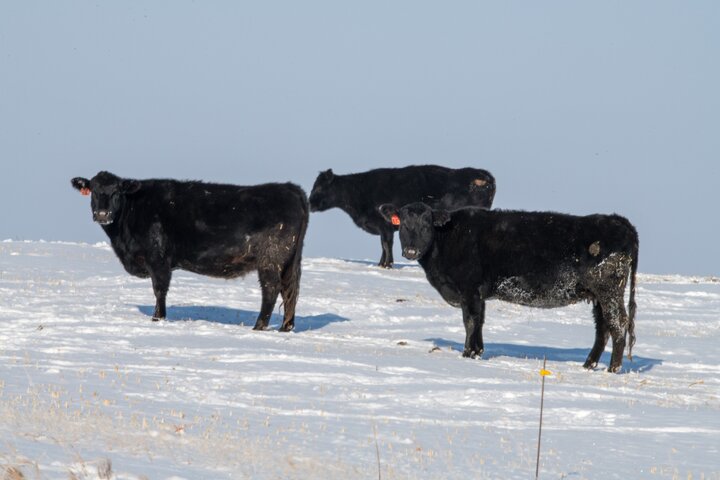The relationship between average daily air temperatures during the last trimester a cow is pregnant and calf birthweights has been documented in research done by the University of Nebraska from 1992-1998 (Climate Affects Calf Birth Weights and Calving Difficulty). Over six years, 285 two-year-old cows and their subsequent calf birth weights and calving difficulty were recorded. This data was then compared with year-to-year variation in average temperatures in the months leading up to calving. The heifers were genetically similar and artificially inseminated to the same Angus sire each year. The bred heifers were managed nutritionally the same each year being grazed on native range pasture in the fall and fed brome grass hay free choice with alfalfa hay being provided at 3-4 pounds per head per day as a protein supplement leading up to calving. Pre-calving cow weights and body condition scores were similar across the six years. The calving season began in mid-February and ended at the first of April. Calving data collected included calf birth weight, birth date, calf sex and a calving difficulty score of 1 to 5 with 1 = no assistance, 3 = mechanical pull and 5 = caesarean.
Weather data was collected and analyzed for December, January and February which were the months right prior to and at the start of the calving season. This time period is when the bred heifers were in their last trimester of pregnancy and also when the majority of fetal calf growth occurs. The winter of 1992-93 was the coldest for this six-year period with an average daily temperature for December-January of 20°F, which was 11°F colder than the warmest winter of 1994-1995 at 31°F.
Average calf birthweight after the 1992-93 time periods was 77.6 lbs. with 58% of the heifers requiring assistance. The average calf birthweight after the 1994-95 time period was 66.4 lbs. with 29% of the heifers requiring assistance. Interestingly across all six years when averaging temperatures and birthweights, for each 1 degree it was colder in average temperatures for the three-month period leading up to calving, there was a 1lbs. increase in average calf birth weight. For producers, there are many factors that impact calf birth weight including cow age, weight, body condition, nutrition, genetics, gestation length and calf sex. Environmental factors such as average daily temperature, is just one factor that contributes to calf birth weight.
As we look back at the months of December and January in Nebraska, according to the Nebraska State Climate Office for the state as a whole, December was 5.3°F warmer than the long-term average and January was 4.2°F warmer. The month of February had periods of record low temperatures for much of Nebraska. How this period of cold weather, which followed two months of above normal temperatures, may impact birthweights of calves as we move on into March and April, remains to be seen. For more information on the research project cited in this article, please see the 1999 Nebraska Beef Report article, “Climate Affects Calf Birth Weights and Calving Difficulty”.
Interviews with the authors of BeefWatch newsletter articles become available throughout the month of publication and are accessible at https://go.unl.edu/podcast.

